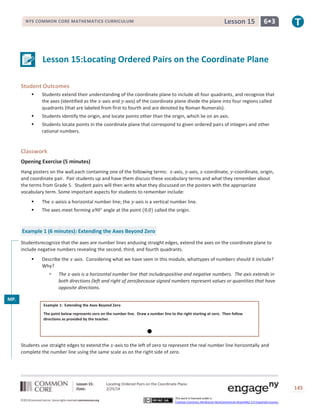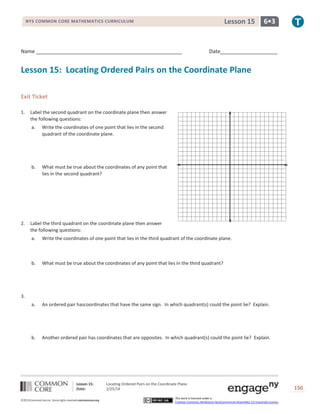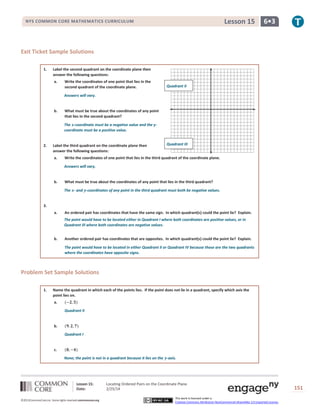The document describes a mathematics lesson on the coordinate plane. It introduces students to locating points on the coordinate plane using ordered pairs of numbers. It discusses extending the x- and y-axes to include negative numbers, revealing all four quadrants. Students learn to identify the origin and locate points in each quadrant based on the signs of the coordinates in the ordered pair. Exercises have students graph points and analyze similarities within each quadrant based on sign patterns in the coordinates.







